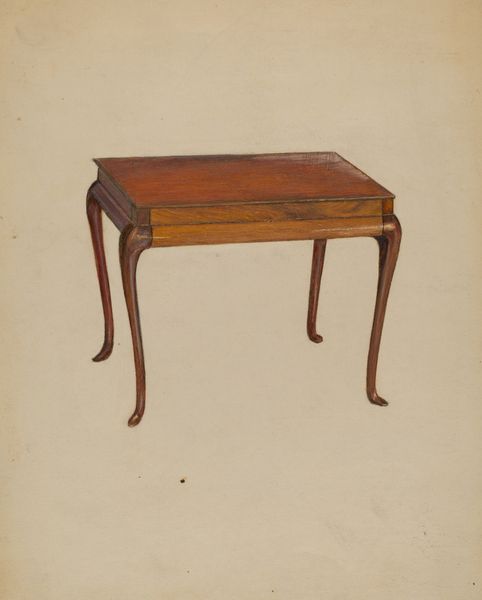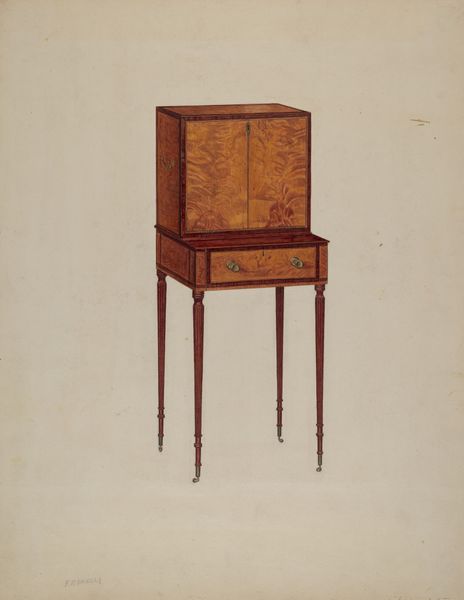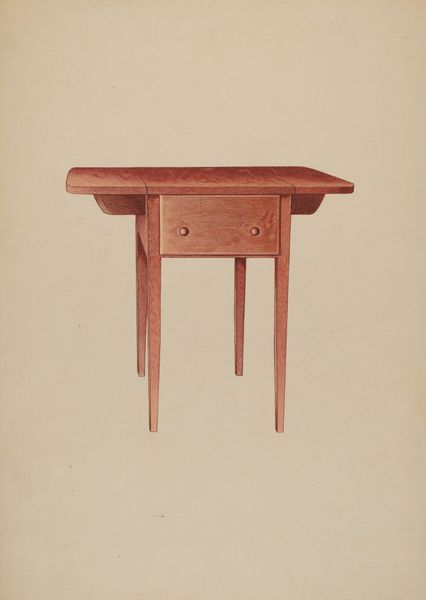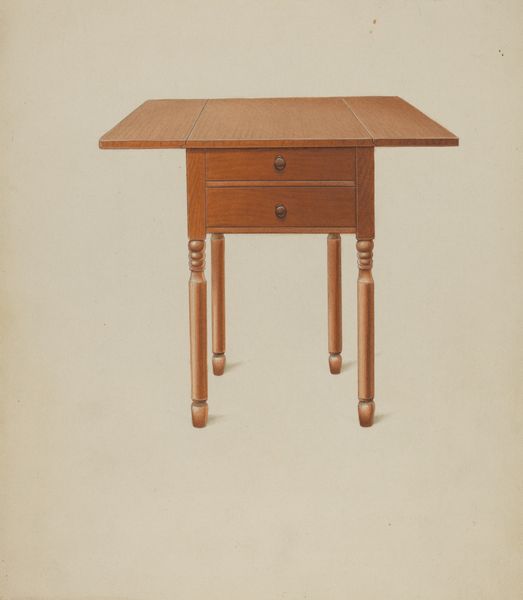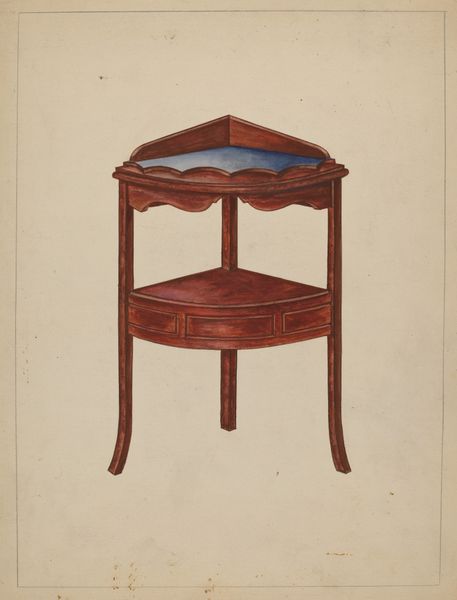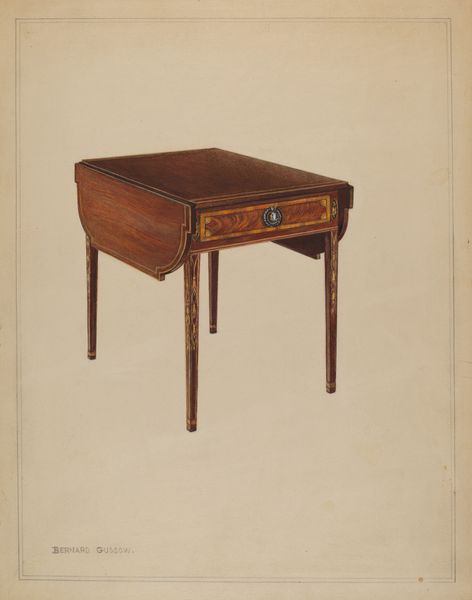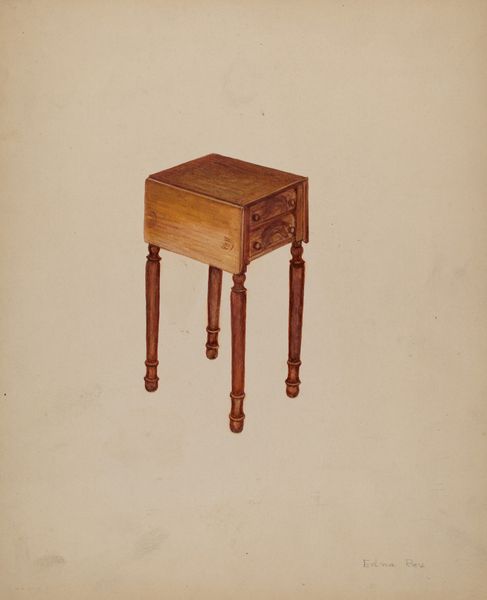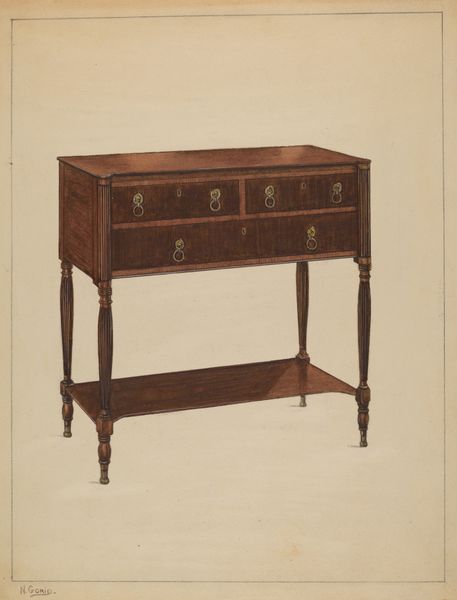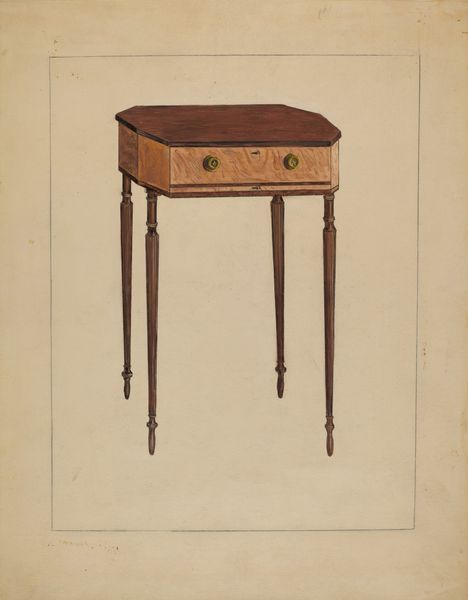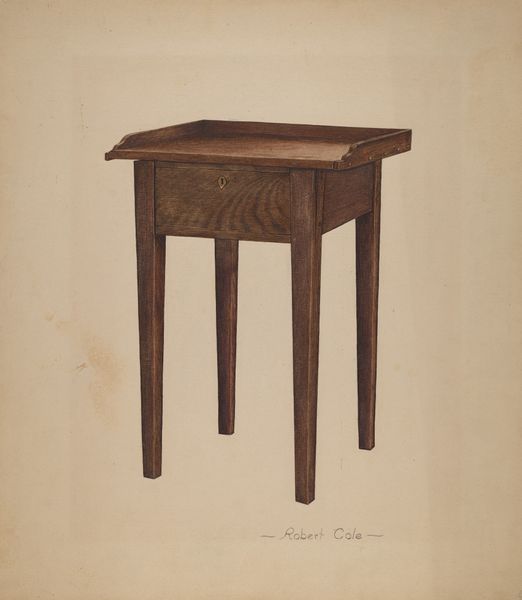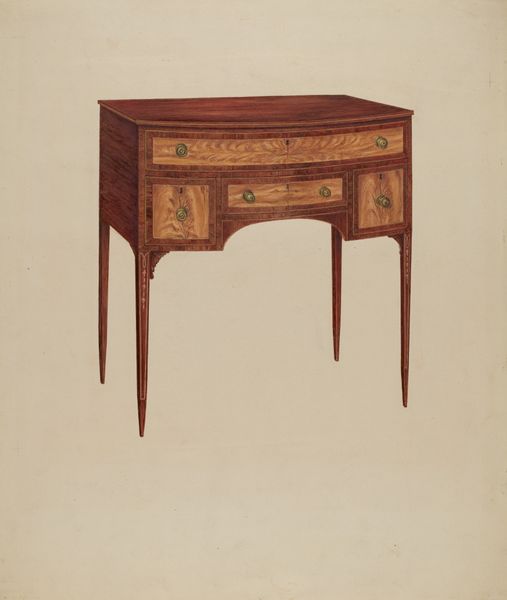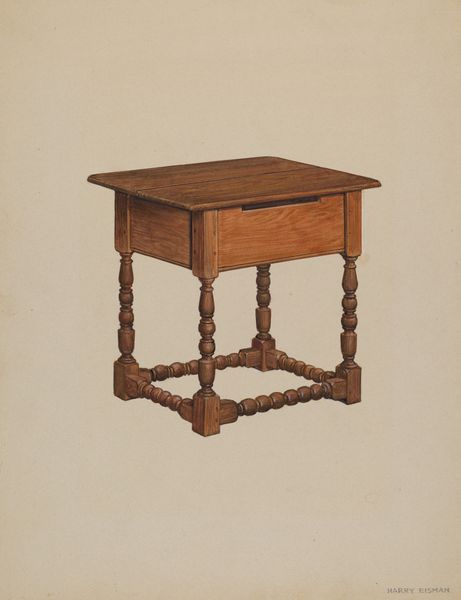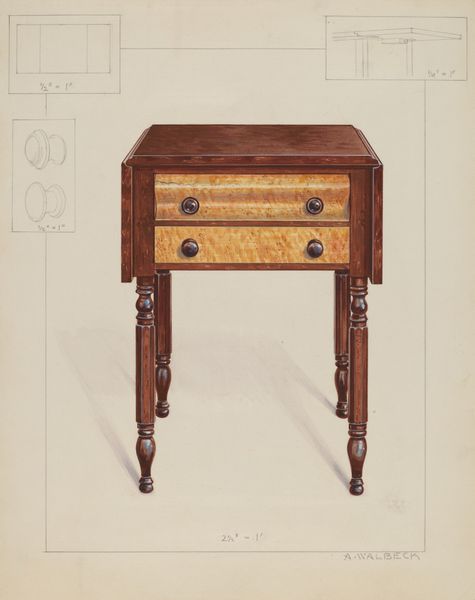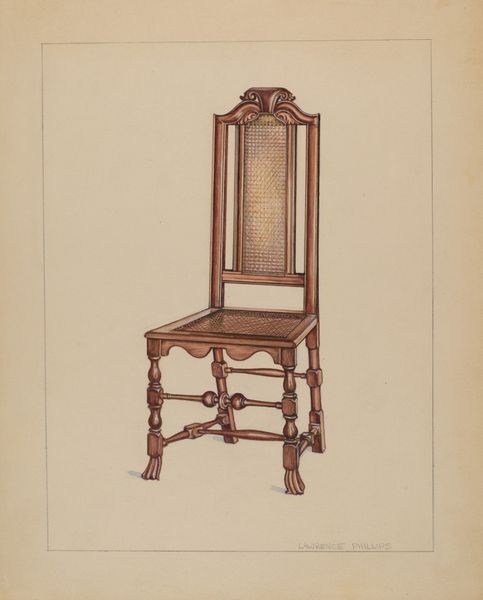
drawing, watercolor
#
drawing
#
watercolor
#
realism
Dimensions: overall: 30.6 x 22.8 cm (12 1/16 x 9 in.) Original IAD Object: 17"square; 28 1/4"high
Copyright: National Gallery of Art: CC0 1.0
Curator: Here we have Francis Law Durand's "Table (Occasional)," circa 1936, rendered with drawing and watercolor techniques. What’s your immediate reaction? Editor: A feeling of domestic tranquility. It presents itself quietly. It evokes a sense of restrained elegance, the simple lines a refuge, perhaps. Curator: Precisely. Durand's choice of realism accentuates the clean geometry and rectilinear planes, with a somber color. The single drawer seems functional rather than purely decorative. Do you note its purpose in this construction? Editor: Is it purely coincidental, then, that this was completed during the height of the Great Depression? The pragmatism might be more than just aesthetic; maybe it also speaks to the scarcity of resources and a societal need for simplicity over excess. A table designed for need, not pomp. Curator: An intriguing reading! Its color also speaks to the time, perhaps a common mahogany, that lends a certain warmth, or perhaps suggests a deeper somber mood in society? The table's lines aren't baroque or ornate, they're purely…efficient. Note, for instance, the placement of each support, perpendicular and parallel, forming rectangular shapes. Editor: Efficiency yes, but at whose expense? Whose hands crafted this simple shape during this challenging time, and what were the lives like behind this single artifact of the era? How does it resonate with working-class histories? Curator: A relevant and humanistic point. Perhaps the table represents a sense of resilience—an aspiration to maintain a level of domestic order and aesthetic appeal during times of duress, with only line, color and shape. Editor: A tiny window into how people furnished their homes, a narrative object that echoes many unheard tales from that period. We are the present inheriting all of its historical and social contradictions. Curator: Absolutely, and considering these qualities will surely provide us with richer understanding of its impact and value in today's world. Editor: It's through these intersecting interpretations that art evolves and keeps engaging, not as isolated beautiful relics, but living vessels.
Comments
No comments
Be the first to comment and join the conversation on the ultimate creative platform.
